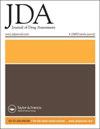Cost-effectiveness model for on-demand treatment of hereditary angioedema (HAE) attacks
IF 2.4
引用次数: 0
Abstract
Abstract Background: Hereditary angioedema (HAE) is a rare C1-inhibitor (C1-INH) deficiency disease involving recurrent painful episodes of severe swelling that should be promptly treated. Aims: To determine cost and utility estimates for on-demand treatment of HAE attacks in order to better clarify and control expenses related to disease management. Methods: A decision-tree model included four comparators (ecallantide, icatibant, plasma-derived [pd] C1-INH, and recombinant human C1-INH [rhC1-INH]) and incorporated probabilities for self-administration vs healthcare provider administration, re-dosing, and hospitalization risk. Modeled costs comprised HAE therapies and healthcare system expenses. Effectiveness considered utility during attacks (0.51), no-attack baseline (0.83), and time to attack resolution. Overall drug cost and effectiveness per attack were used to estimate cost per quality-adjusted life year (QALY). Sensitivity analyses were performed to establish cost-effectiveness ranges. A budget impact model was developed for a health plan of 1 million (M) covered lives. Results: Costs and utility per attack were, respectively, $12,342 and 0.804 for rhC1-INH, $14,369 and 0.749 for icatibant, $13,993 and 0.759 for pdC1-INH, and $20,315 and 0.786 for ecallantide. At a mean annual attack rate of 26.9, cost per QALY was $402,769 for rhC1-INH, $475,942 for icatibant, $462,275 for pdC1-INH, and $666,153 for ecallantide. Re-dose rate was identified as a primary driver of cost-effectiveness variability. Estimated annual cost to the plan was $6.64 M for rhC1-INH, $7.73 M for icatibant, $7.53 M for pdC1-INH, and $10.93 M for ecallantide. A 5000-trial probabilistic sensitivity analysis (PSA) indicated that rhC1-INH was the most cost-effective in many scenarios, while ecallantide was the least cost-effective: mean costs (effectiveness) from PSA were $12,390 (0.786) for rhC1-INH, $14,132 (0.738) for icatibant, $13,050 (0.746) for pdC-1INH, and $20,286 (0.785) for ecallantide. Conclusions: This model demonstrated that rhC1-INH was the most cost-effective and ecallantide the least cost-effective on-demand HAE treatment and, overall, cost-effectiveness was substantially impacted by re-dosing rates. For icatibant, re-dosing rates of up to 44% to treat an HAE attack have been reported, and prescribing information allows up to three doses per 24-h period to treat a single attack. Driven by higher re-dosing rates, icatibant suffers from a higher per-attack drug cost and comparatively poor effectiveness.遗传性血管性水肿(HAE)发作按需治疗的成本-效果模型
摘要背景:遗传性血管性水肿(HAE)是一种罕见的C1抑制剂(C1-INH)缺乏症,涉及反复发作的严重肿胀疼痛,应及时治疗。目的:确定HAE发作按需治疗的成本和效用估计,以便更好地阐明和控制与疾病管理相关的费用。方法:决策树模型包括四个比较物(ecallantide、艾蒂班特、血浆来源的[pd]C1-INH和重组人C1-INH[rhC1-INH]),并结合了自我给药与医疗保健提供者给药、再给药和住院风险的概率。建模成本包括HAE治疗和医疗保健系统费用。有效性考虑了攻击期间的效用(0.51)、无攻击基线(0.83)和攻击解决时间。使用每次发作的总体药物成本和有效性来估计每个质量调整生命年(QALY)的成本。进行敏感性分析以确定成本效益范围。为覆盖100万生命的健康计划制定了预算影响模型。结果:rhC1 INH每次攻击的成本和效用分别为12342美元和0.804美元,艾替班为14369美元和0.749美元,pdC1 INH为13993美元和0.759美元,ecallantide为20315美元和0.786美元。在26.9的平均年发病率下,rhC1 INH的每QALY成本为402769美元,艾替班为475942美元,pdC1 INH为462275美元,ecallantide为666153美元。再给药率被确定为成本效益变异性的主要驱动因素。该计划的年度成本估计为6.64美元 M用于rhC1 INH,7.73美元 M为艾蒂班特,7.53美元 pdC1 INH为M,10.93美元 M代表ecallantide。一项5000项试验的概率敏感性分析(PSA)表明,在许多情况下,rhC1 INH是最具成本效益的,而ecallantide是最不具成本效益:PSA的平均成本(有效性)为:rhC1 INH为12390美元(0.786),阿替班为14132美元(0.738),pdC-1INH为13050美元(0.746),ecallantid为20286美元(0.785)。结论:该模型表明,rhC1-INH是最具成本效益的,ecallantide是成本效益最低的按需HAE治疗,总体而言,成本效益受到再给药率的显著影响。据报道,艾蒂班特治疗HAE发作的再给药率高达44%,处方信息允许每24小时最多给药三剂,以治疗一次发作。在更高的再给药率的驱动下,艾蒂班特每次发作的药物成本更高,疗效相对较差。
本文章由计算机程序翻译,如有差异,请以英文原文为准。
求助全文
约1分钟内获得全文
求助全文

 求助内容:
求助内容: 应助结果提醒方式:
应助结果提醒方式:


